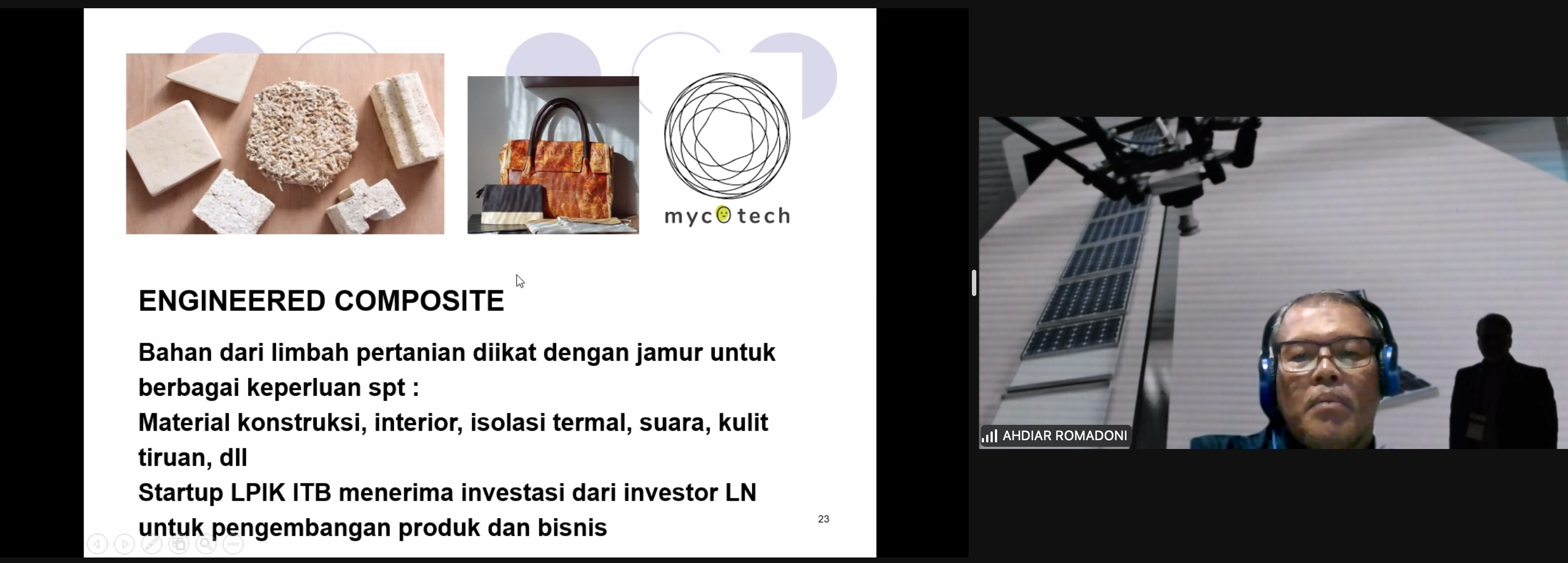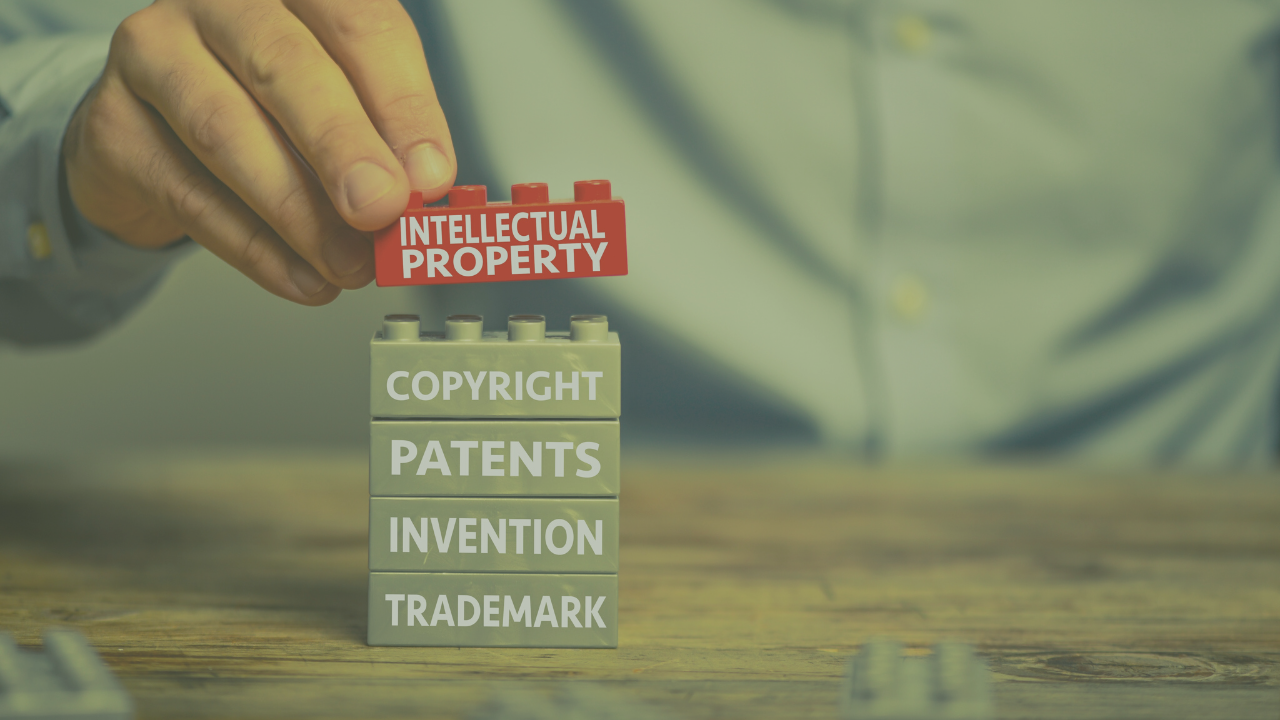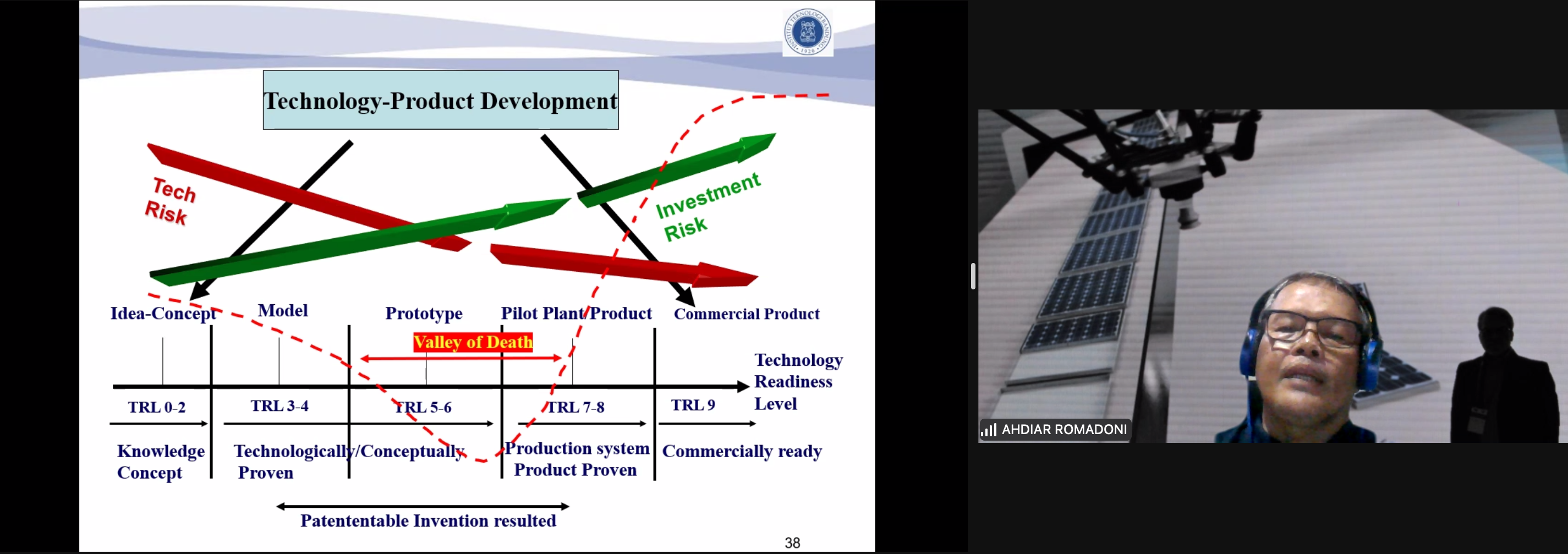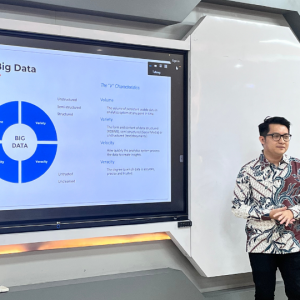The increasingly global market conditions make the competition more challenging because goods and services are free to enter countries, so a differentiation strategy is needed to exceed competitors. This condition has extended Intellectual Property Rights (IPR) from mere legal protection of inventions to a means of competition in trade and industry, as stated by Ir. Ahdiar Romadoni, MBA, the IP and Technology Transfer Advisor at LPIK ITB, during the Guest Lecture session on Monday (28/3/2022).

Intellectual property as a product of the human mind (intellectual work) in the form of inventions, designs, names, art, etc., can be utilized in business in many ways. For example, joint development, where intellectual property is created and owned jointly as a collaboration between various parties, or licenses, namely when the inventor of the intellectual property grants permission to another party for the commercialization of his invention. This is where IPR, as an exclusive right granted by the state to a person, group, or legal entity within a certain period for disclosing their work to the public (knowledge transfer), plays a role. IPR secures the rights of the inventor to their invention, as well as controls the use of the invention.

One example of utilizing intellectual property rights in a business that generates a competitive advantage is Mycotech, a startup under LPIK ITB that invented a way to transform mushrooms into artificial leather as engineered composites. The startup’s use of IPR has made them succeed in obtaining funding from foreign investors for business development to penetrate the international market.






